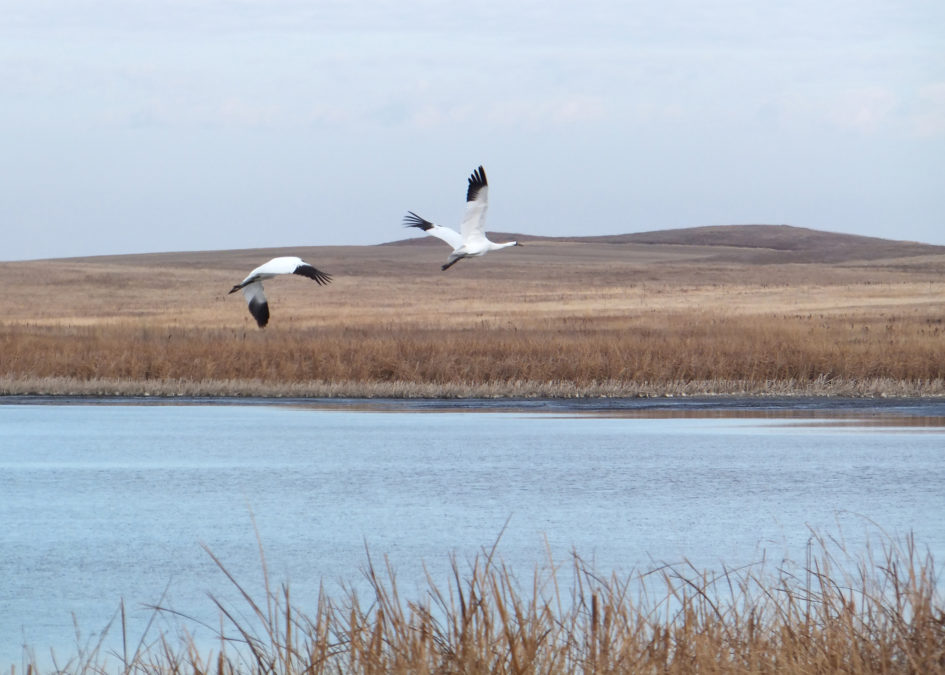The spring snow goose season opened in mid-February and honestly leading up to it the open winter and unseasonably warm weather had hunters and biologist alike thinking, “..this just might be the year birds are here before March…” As luck and meteorologists would have it a more typical weather cycle settled in and colder temperatures and a little snow held off spring and the migration until mid-March.
The majority of the massive flocks — tens of thousands at a time — pushed through late March and early April. Veteran snow goose hunters will relay those generally are the adult birds and the juvenile flocks which tend to respond to decoying and calls a little less cautiously will continue trickling through deep into May and the season doesn’t close until May 17 for that reason.
The spring migration is more than just huntable snow geese, ducks and Canada geese. It’s doves, western meadowlarks, robins and even the endangered whooping cranes.
In 1860 it was believed around 1,400 whooping cranes existed in North America. By the mid-1940s, the population estimate was down to just 15 birds in existence. Through a variety of recovery efforts since then, the whooping crane staved off extinction, though it is still one of the most endangered birds on the continent.
The wild flock has slowly increased to a current population of more than 350. This flock winters in and around Aransas National Wildlife Refuge on the Gulf Coast of Texas. In spring, they migrate north, nesting in Wood Buffalo National Park, which straddles the border of Alberta and Northwest Territories in Canada.
This flock of whooping cranes is the only naturally occurring wild population in the world. Scientists have long recognized the risk of having all of the wild whooping cranes using one wintering and breeding location.
With all the wild birds concentrated in one relatively small area, the population could be wiped out by disease, bad weather, or human impacts. Whooping crane survival depends on additional, separate populations.
The endangered status of this remnant flock is why anyone seeing these birds as they move through the state is asked to report sightings so the birds can be tracked. In mid-to-late April it’s still possible to encounter these birds, particularly through the central part of the state.
Whoopers stand about 5 feet tall and have a wingspan of about 7 feet from tip to tip. They are bright white with black wing tips, which are visible only when the wings are outspread. In flight, they extend their long necks straight forward while their long, slender legs extend out behind the tail. Whooping cranes typically migrate singly, or in small groups, and may be associated with sandhill cranes.
Other white birds such as snow geese, swans and egrets are often mistaken for whooping cranes. The most common misidentification is pelicans because their wingspan is similar and they tuck their pouch in flight, leaving a silhouette similar to a crane when viewed from below.
Anyone sighting whoopers should not disturb them but do record the date, time, location, and the birds’ activity. Observers should also look closely for and report colored bands which may occur on one or both legs. Whooping cranes have been marked with colored leg bands to help determine their identity.
Whooping crane sightings should be reported to the U.S. Fish and Wildlife Service office at Lostwood NWR at 701-848-2466, or Long Lake NWR at 701-387-4397, the North Dakota Game and Fish Department in Bismarck, 701-328-6300, or to local game wardens across the state.
Reports help biologists locate important whooping crane habitat areas, monitor marked birds, determine survival and population numbers, and identify times and migration routes.



